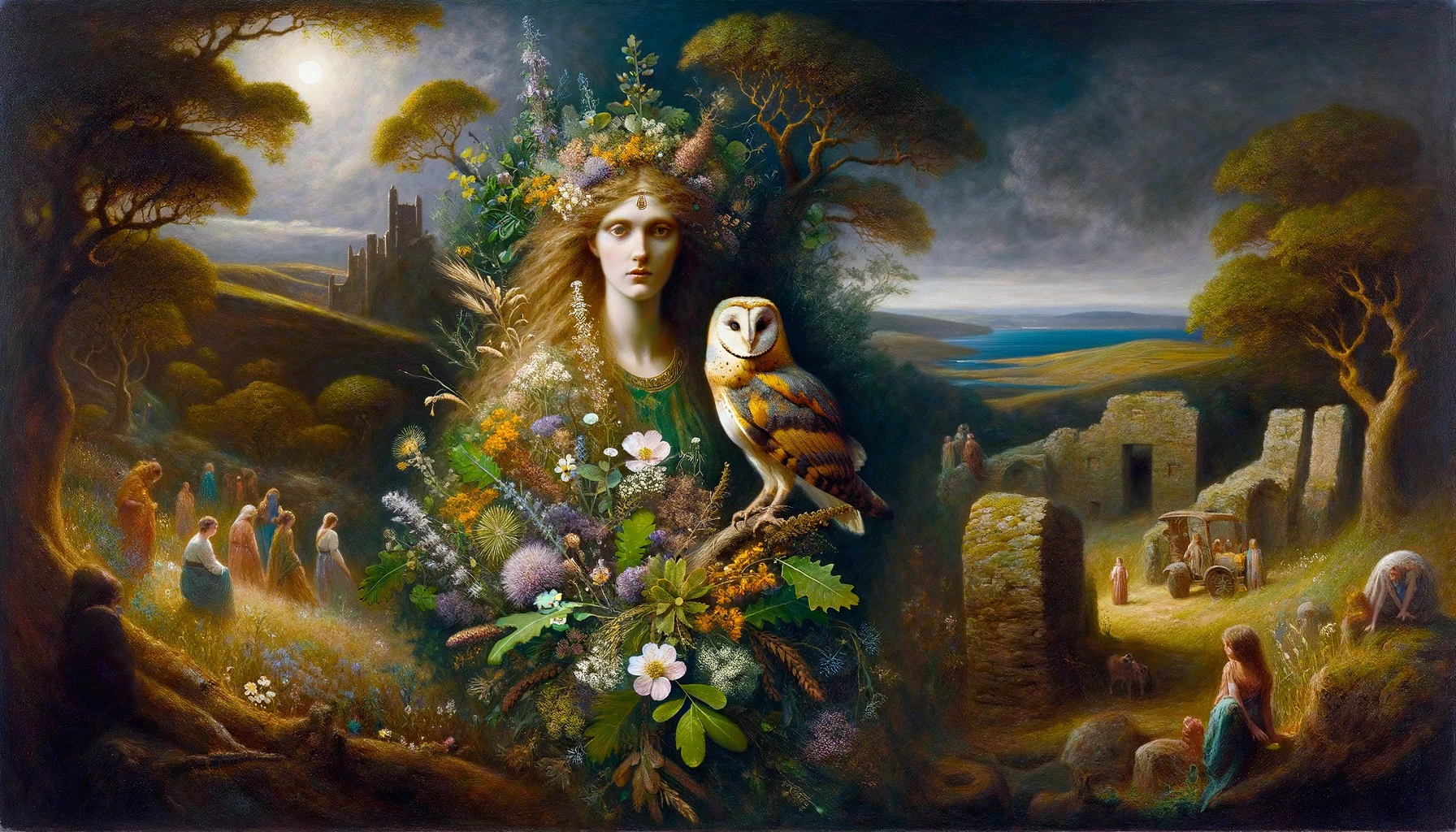Blodeuwedd, a character from Welsh mythology, plays a pivotal role in The Fourth Branch of the Mabinogi: Math Son of Mathonwy. Her name, meaning “Flower-Faced,” is derived from the Welsh words for “flowers” (blodau) and “face” (gwedd). Blodeuwedd’s story is a tale of creation, betrayal, and transformation, deeply embedded in the magical and mythical landscape of Welsh lore.
The Blodeuwedd of Blodeuwedd
Created by the magicians Math and Gwydion from the flowers of oak, broom, and meadowsweet, Blodeuwedd was fashioned to be the wife of Lleu Llaw Gyffes. This creation was necessary due to a or curse, placed upon Lleu by his mother, Arianrhod, stipulating that he could never have a human wife. Blodeuwedd was named “flower-face” for her origins and beauty.
Blodeuwedd Betrays her husband
However, Blodeuwedd’s tale takes a dark turn. During Lleu’s absence, she falls in love with Gronw Pebr, the lord of Penllyn. The two lovers plot to kill Lleu, exploiting the peculiar the prophecy, that Lleu can only be killed at dusk, neither indoors nor outdoors, not clothed nor naked, and by a spear not crafted during normal working hours.
Using this knowledge, Blodeuwedd sets the stage for Lleu’s assassination. Gronw wounds Lleu with a specially forged spear, but Lleu transforms into an eagle and escapes. Gwydion later finds and heals Lleu, who then seeks retribution against his wife and her lover.
Transformation and Punishment of Blodeuwedd
Gwydion punishes Blodeuwedd by transforming her into an owl, declaring that she will be shunned by all other birds and will never show her face in the light of day. This transformation leads to the owl’s name in Welsh, “Blodeuwedd,” and the animosity between owls and other birds.
Gronw, meanwhile, flees but is later forced to face Lleu’s retribution. Despite his attempts to shield himself, Lleu’s spear, thrown with immense force, kills Gronw. This event is memorialized by a holed stone known as Llech Ronw (Gronw’s Stone).
Symbolism
The character of Blodeuwedd oscillates between being viewed as a treacherous woman, given her role in Lleu’s attempted murder, and as a representation of an ancient goddess, with her story echoing themes of life, death, and rebirth, which are common in Celtic mythology. She can be seen as a shadow of an ancient goddess of death, given the circumstances of her creation and actions. She could be a Welsh equivalent of Delilah, the woman who betrays Samson in the Old Testament.
